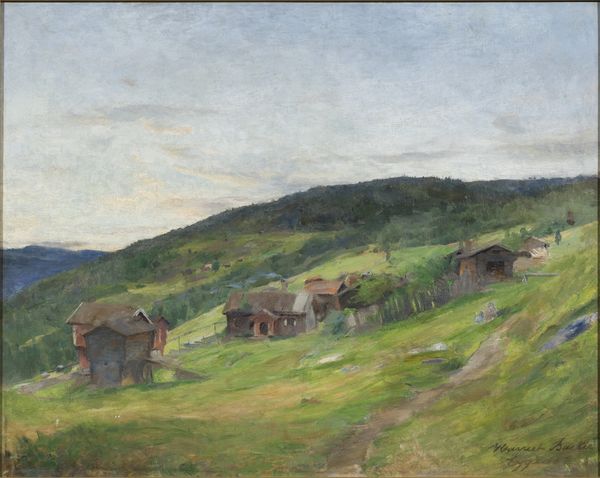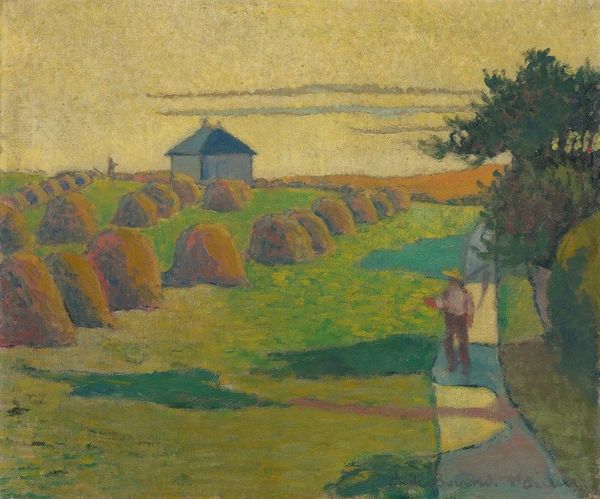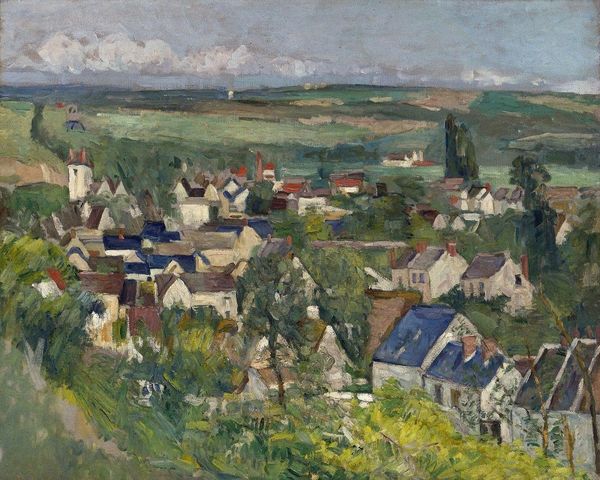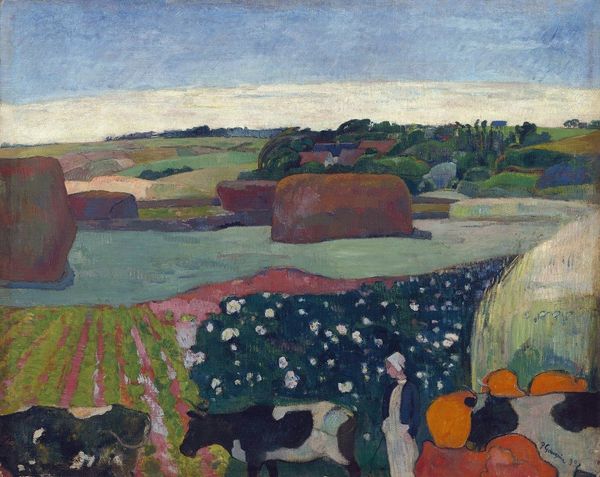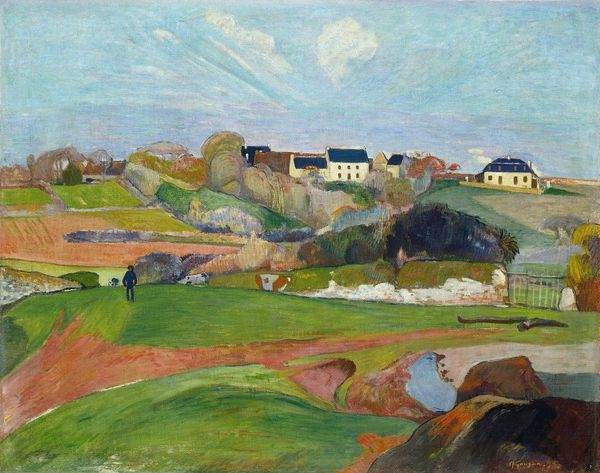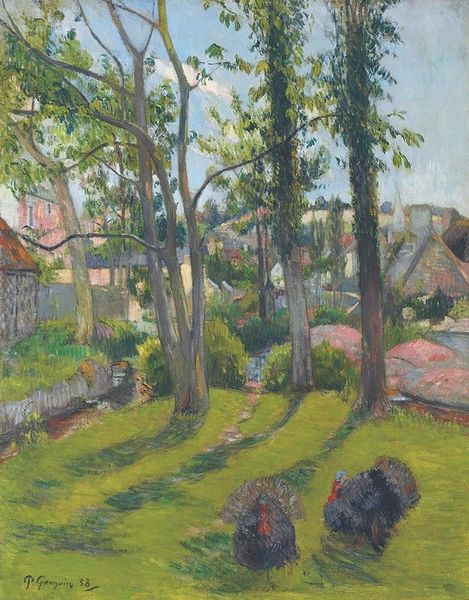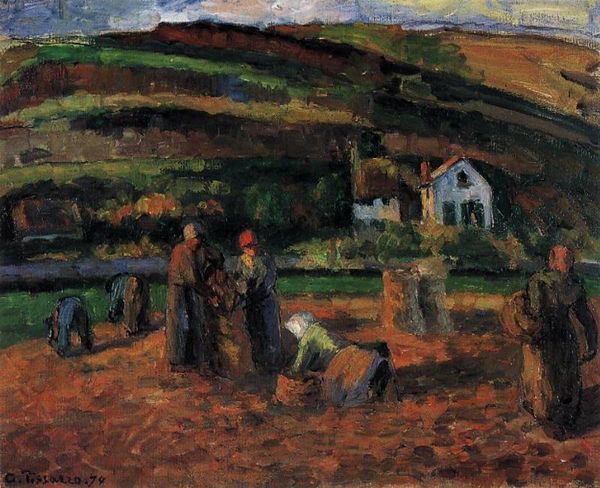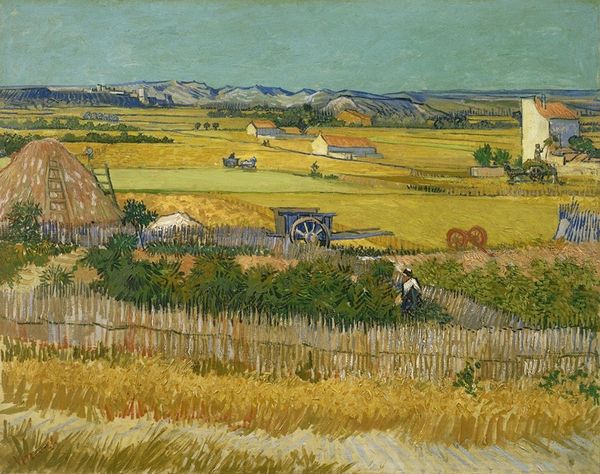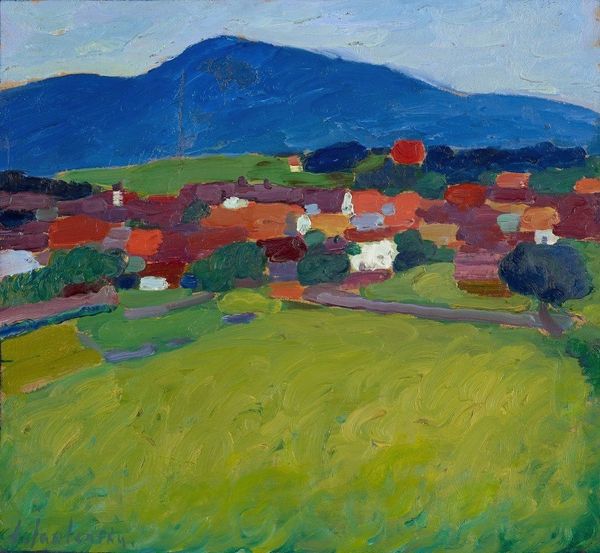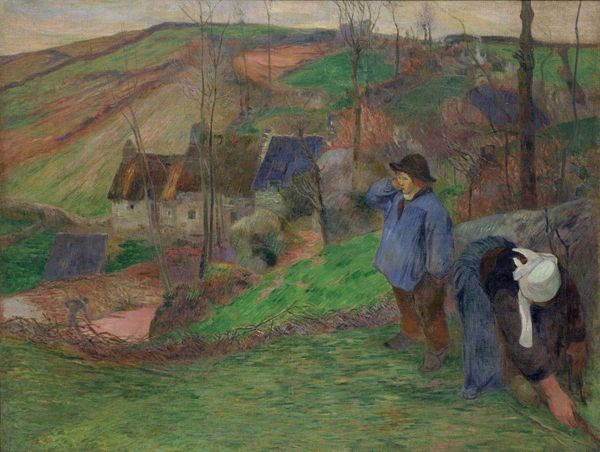
oil-paint
#
figurative
#
oil-paint
#
landscape
#
figuration
#
oil painting
#
naive art
#
post-impressionism
Copyright: Public Domain: Artvee
Curator: Paul Gauguin’s “The Swineherd,” painted in 1888, invites us to consider the rural life he encountered in Brittany, France, during that period. The artwork utilizes oil on canvas and is firmly rooted in Post-Impressionism. Editor: My first impression? It's dreamlike. The colors seem heightened, not quite real. It’s as if the scene is filtered through a lens of nostalgia or perhaps longing for a simpler life. There's also a stillness to it. Curator: Gauguin often used these rural scenes to express a sense of cultural purity, positioning rural life against the perceived corruption of urban, industrial society. This interest also reveals some complicated positioning for Gauguin, specifically within an historical context defined by colonial power structures. Editor: Complicated is an understatement! The 'noble savage' trope is palpable. He exoticizes this Breton scene even while claiming to celebrate it. Notice the flattened perspective, the almost childlike simplicity in the rendering of the figures. Doesn’t this strip the community of agency? Is he really painting them, or a constructed idea of them? Curator: Absolutely. Gauguin’s use of color here is also interesting in that respect, too. Look how he moves away from naturalism in the treatment of the landscape, exaggerating the hues and form of the fields and even the livestock themselves. These choices are, without a doubt, ideologically loaded. We might question to what extent this landscape is something witnessed or completely fabricated, because we could consider this artwork a commentary on labor exploitation and class. Editor: The swineherd himself looks detached, almost melancholic, despite being surrounded by a pastoral scene. Is he contemplating something, or is this meant to represent an idealized peasant at one with nature? Also, how might we interpret the prominent church steeple rising in the distance, against a landscape defined more clearly by natural life, rather than religious dogma? Curator: It does introduce tension between traditional belief systems and lived, earthly experiences. In exhibiting the artwork at the time, the image created quite a stir within a community still rooted within long held traditions that existed both within religious and feudal communities. The Swineherd represents an important cultural marker that shows this society moving more explicitly from long-standing tradition toward capitalist ambition. Editor: Reflecting on Gauguin’s "The Swineherd," I am compelled to interrogate art historical romanticizations and narratives, urging myself to look more critically at who is really being centered. Curator: Likewise, seeing this artwork reveals Gauguin's attempt to grapple with and present alternative visions of society, all while participating, either directly or indirectly, with harmful cultural tropes.
Comments
No comments
Be the first to comment and join the conversation on the ultimate creative platform.
